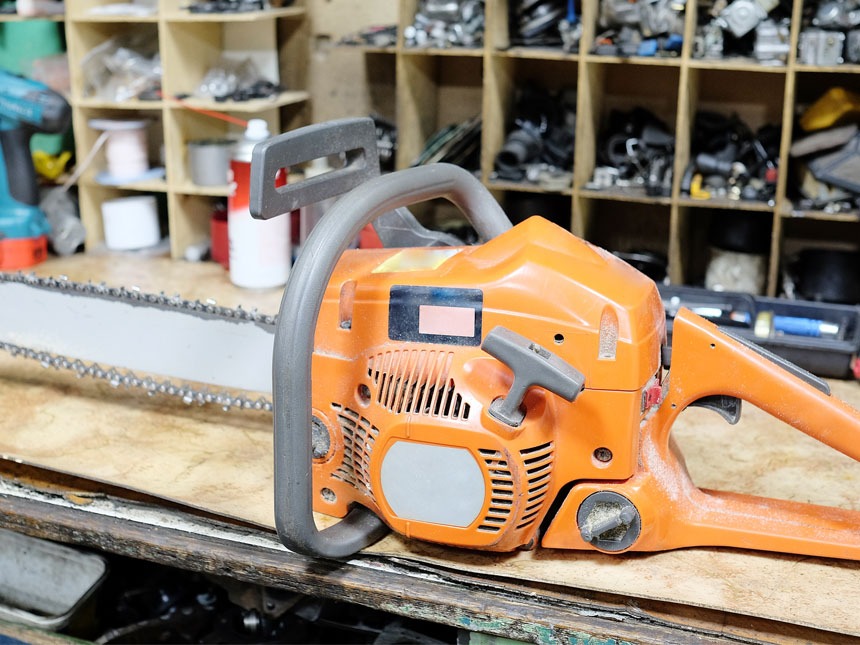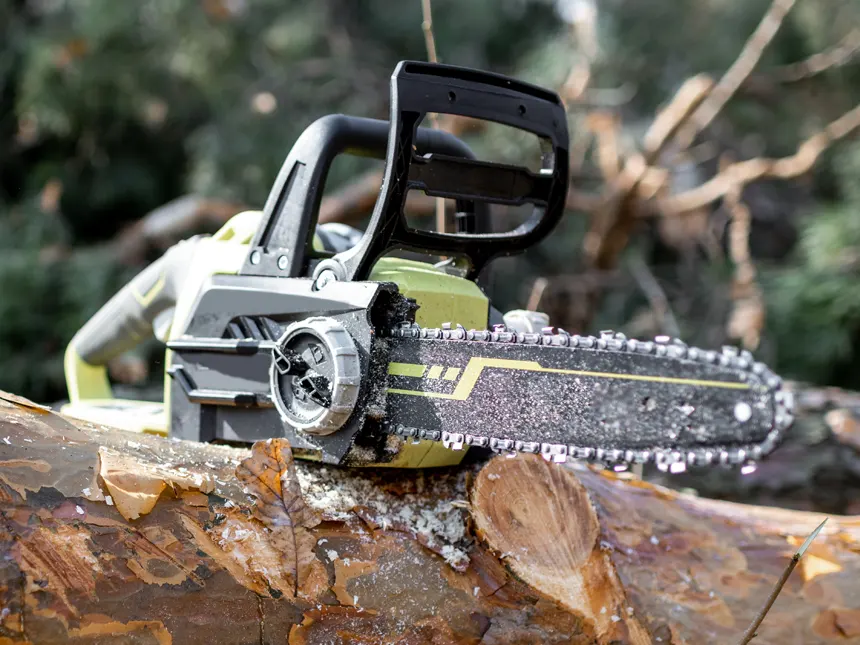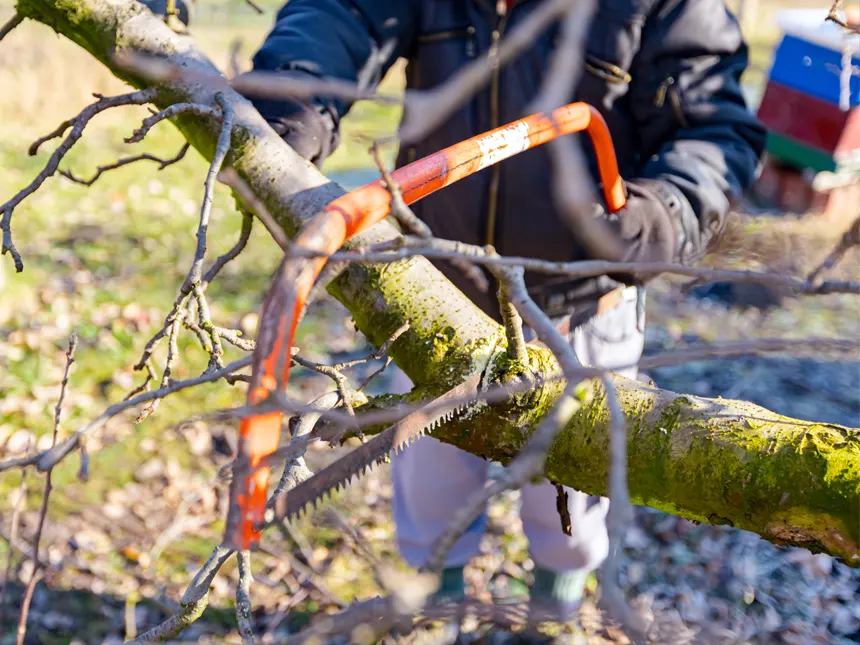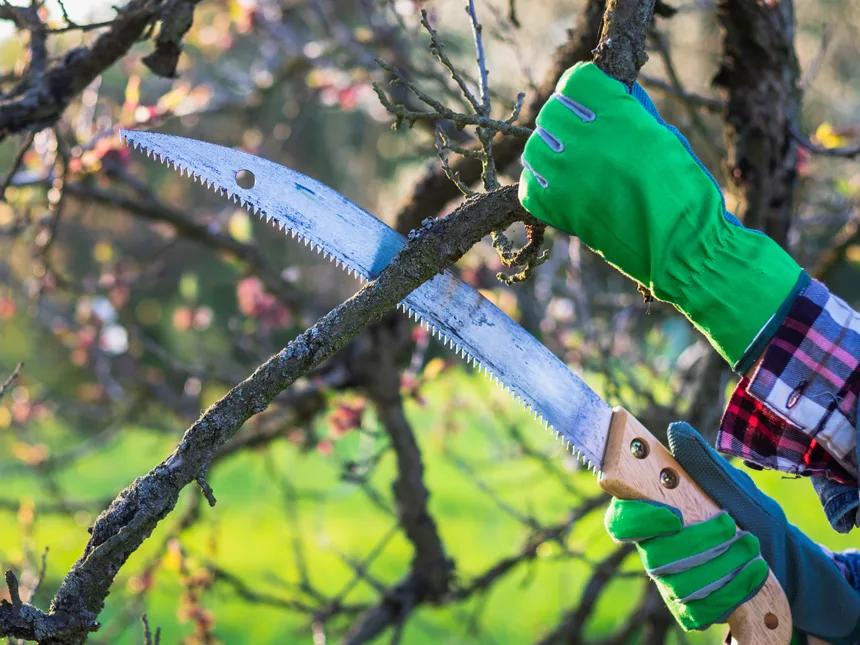Sweetgum Firewood: Good or Bad?
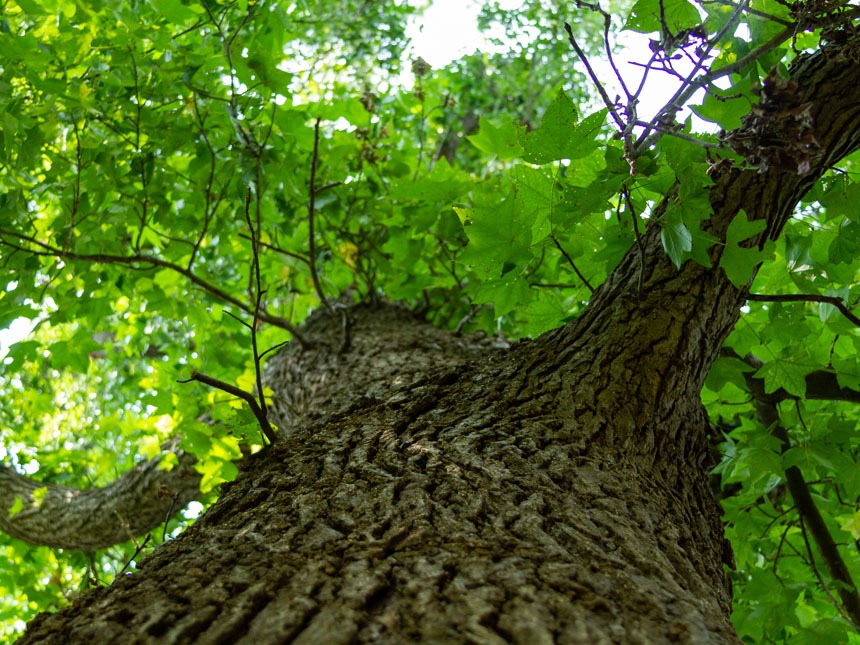
Timber Gadgets is reader-supported. We may earn a commission if you buy through the links on our site.
Sweetgum is relatively a poor firewood mainly due to its splitting difficulty. It is commonly found in the Southeastern United States and grows in a temperate and humid environment. This tree develops beautiful foliage which turns from green into beautiful colors in fall. So, it is also grown as an ornamental tree.
It finds great value as lumber and is used in furniture making. However, it is difficult to handle due to its twisting habit. Due to its grains running in a spiral manner and its fibers woven into each other, wood becomes twisted on drying.
It is recommended to let the wood dry, and then cut it for lumber. If fresh wood is cut then better to keep the pieces stacked close with less space to move or twist. Its outer whitish sapwood may contain black grains.
Central wood or heartwood is usually red-colored and grows into many shapes. This central heartwood for its color is also known as Redgum. Its sap has medicinal properties.
It is easily identified by its star-shaped leaves and hard spiked fruits which can be found all around the tree. Fruit encloses many seeds. Its spiked shells create a great nuisance for people. It can attain a height of 150 feet and live for 400 years.
Table of Contents
Is Sweetgum Good Firewood?
Sweetgum tends to produce a decent amount of heat. However, it is hard to split and twists on drying. For these properties, it is not preferred by many for burning firewood. Still, if you have it in excess it can give you a decent fire.
Some people may never know this wood. It catches fire easily and burns fast, giving a good amount of heat but for not a long duration, making it hard to rely on it for a full night.
The main problem for which it loses its importance is in its splitting. It is a pain to split Sweetgum. No other wood causes so much difficulty to split (other than Elm, maybe). Its fibers are tangled and woven into each other and splitting it is more like tearing it apart.
Splitting gets more difficult as it dries up. It has a spiral grain and interlinked fibers also cause the twisting. As it loses its moisture it loses its shape. It is very difficult to split using ax or maul, so it is recommended to use a hydraulic wood splitter. Even with the splitter, it gets difficult to handle.
It finds its best use burning mixed with other hardwood like oak, walnut, or beech. It does not lose moisture easily, so do not make the mistake of burning it wet. Otherwise, it can produce large quantities of smoke and creosote.
Its heartwood does not follow a fixed shape and varies along the trunk. It sometimes forms a beautiful wood pattern for which it is preferred. Sapwood (white, with the black grain) is not very attractive. Sweetgum rots quickly and bugs may attack it easily.
Burn Qualities of Sweetgum Firewood
- BTU: 21.3 million per cord
- Weight: 2592 lb (dry cord)
- Resin / Sap Content: medium
- Seasoning Time: one year
- Smoke: Low
- Splitting Difficulty: Hard
- Smell: None
Sweetgum catches fire easily and burns hot and fast. It is not a preferred wood to burn overnight due to this. It does not produce good coal and leaves lots of ash behind. To get a good fire and coal it is recommended to burn it mixed with Oak or other hardwoods.
It produces an average amount of smoke compared to other firewoods.
Heat Output
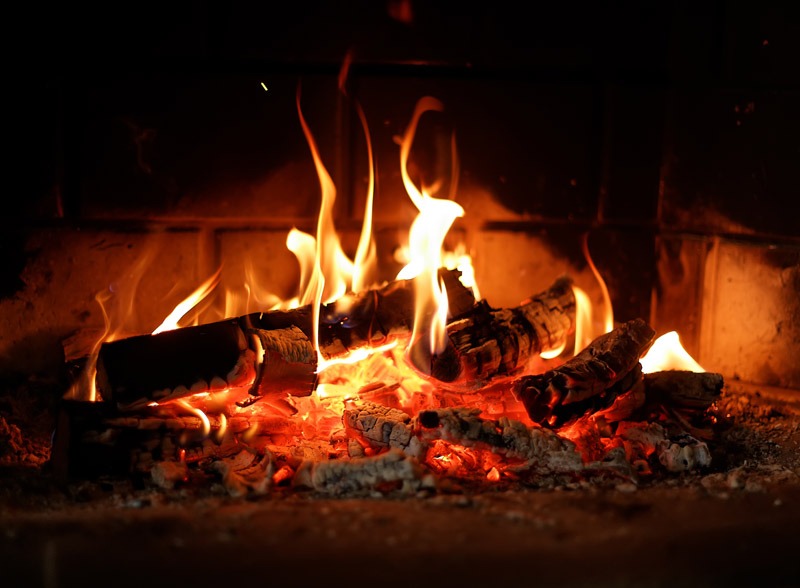
While sweetgum is not very popular, it burns well in the stove. It produces a decent amount of heat among the firewood species.
It produces nearly 21.3 million BTUs per cord. While we have firewood with BTU between 13 to 30 million BTUs, sweetgum falls somewhere in the middle range.
It is hardwood but it burns fast so it is recommended to burn with better quality firewood like oak. This compensates for its inferior burning qualities.
Heat output is not the only criteria to determine the quality of firewood. The burn time should be great enough to last most of the night. It is short for sweetgum, unfortunately. This characteristic reflects in coal quality. Coals from sweetgum are short-lived, which lowers its overall quality in my opinion.
Splitting
The real challenge in using sweetgum is splitting. It does not come apart easily. It’s extremely challenging with a splitting axe or maul. Even with a hydraulic log splitter, it’s difficult.
It does not split. It more accurately tears apart. Its interwoven fibers are packed into each other. On drying, they become more hard and difficult to cut through. It is recommended to cut the greenwood, otherwise, with the moisture loss, the job gets difficult.
Sawing off the medium to small branches may be worthwhile. I’d hate to see wasted firewood but again, it’s a struggle to split.
Smoke
Dry and seasoned sweetgum gives off low smokes. Seasoned wood means it contains moisture less than 20 percent. Unseasoned Sweetgum can produce high smoke with a large number of unburned particles. A fresh piece into the fire gives high smoke at the beginning, rest depends upon its moisture content.
Creosote
Sweetgum does not produce large quantities of creosote however seasonal cleaning of the chimney is advised. If a piece is burnt unseasoned, it may send a large number of particles in smoke. These may build layers of creosote inside your chimney.
Creosote can lead to chimney fires or housefire because it is highly flammable.
Popping is also experienced while burning sweetgum. This can ignite the creosote and cause a problem.
Spark
Even seasoned wood is not completely devoid of moisture. Along with moisture, resins also create pressure when wood burns fast. This pressure causes the burning wood to pop and snap. This creates a lot of sparks.
Sweetgum produces sparks so it is recommended to use a glass screen in front of your stove. Otherwise, these sparks may create fire hazards in your house.
Smell
Sweetgum is not known for any characteristic smell. If kept moist for a long period, it can produce a musty aroma.
Unseasoned firewood produces an unpleasant odor. Some people describe the smell as yeast or beer-like. It is not recommended to use for cooking or smoking purposes. The particles in the smoke may cover the food or add an unpleasant odor. Some people even consider it toxic for cooking purposes.
Coals
Sweetgum burns fast. Fast-burning woods do not usually produce good-quality coals. Coals from sweetgum are also low quality and do not burn long. It also produces large quantities of ash. To get good quality fire and coal, it is recommended to burn sweetgum mixed with Oak, Hickory, or Beechwood. It will produce coals that may last longer to warm your night.
Sap
Sweetgum has 79 percent moisture content in fresh-cut greenwood, which is fairly high. For this reason, it takes a good amount of time to get seasoned properly. It also contains high resin contents.
Interestingly enough, its sap carries medicinal properties and is used to treat diarrhea, skin problems, cough, and ulcers. The sap is known as storax. It has antibacterial, antiviral, and anti-fungal properties.
Comparing Sweetgum Firewood to Others
Sweetgum produces a fair amount of heat. It has a heat output of 21.3 million BTUs per cord which is average to good. Unfortunately, it is very hard to split which is the main reason people do not dare to put much effort into it.
It burns fast and produces low-quality coals which also downs its quality. It carries no particular smell but wet wood may release odor. High moisture content in the greenwood also takes time to dry up. While smoke production is low to average, it produces a lot of sparks which may cause a house fire.
It is recommended to burn mixed with better-quality wood. Doing this eliminates many of its drawbacks and adds to the quantity of firewood.
If you can work with splitting, sweetgum can be worth burning in your stove.
Here we have compared sweetgum with other firewood
| Species | Weight (lbs./Cord) Dry | Heat per Cord (Million BTUs) |
|---|---|---|
| Osage-orange | 4728 | 32.9 |
| Oak, White | 4200 | 29.1 |
| Elm, American | 2872 | 20.0 |
| Sweetgum | 2592 | 21.3 |
| Pine, Lodgepole | 2610 | 21.1 |
| Pine, Ponderosa | 2336 | 16.2 |
| Pine, White | 2250 | 15.9 |
| Fir, White | 2104 | 14.6 |
| Redcedar, Eastern | 2060 | 13.0 |
How Long to Season Sweetgum Firewood?
The most important factor to achieve the burning qualities of any particular type of firewood is seasoning. Seasoning means reducing the moisture level of firewood below 20 percent. Seasoned wood gives off more heat, less smoke, better quality coal, and prevents bad odor.
It may take up to one year to properly season sweetgum. When a green sweetgum tree is cut it contains high moisture. It can be around 79 percent which is pretty high. Wood should be split into pieces before seasoning. It does not lose moisture quickly. It should be stored under good conditions as moist wood starts rotting or develops mold easily.
The split wood can be stacked into rows raised from the ground at least 6 inches or more. There must be proper spacing between the rows for proper air movement and moisture loss. Split wood should be stacked in an open area. Rows should have a direction parallel with the wind. It will allow higher air movement through the stacks.
It is advised to cover the top with an insulated sheet. This can save the wood from rainwater. Be careful not to cover the sides of stacks more than one-third. This may trap the moisture inside and increase the seasoning time.
Sweetgum tends to shrink up to 15 percent upon seasoning which is probably more than any other firewood species. Drying sweetgum for furniture use causes real pain.
As it takes time to lose moisture, it also loses its shape. Its stringing green tends to contract and bend the wood which deteriorates the quality of wood for furniture use. To solve this problem people may store wood pieces in many racks above each other.
Good spacing is maintained between the rows for moisture loss. It is also recommended to cut the wood after it gets dry. For furniture purposes, this will save most of the bending.
Identifying Sweetgum Trees
American sweetgum is the most popular species also called gumball tree. It has a beautiful shade and is grown in landscapes for ornamental purposes.
Liquidambar means “liquid amber” which refers to its yellow sap. It is a sweet sticky substance that flows out from the trunk when it is cut. Another common name is red gum for its red heartwood and red-colored leaves in the fall.
Appearance
Sweetgum is medium to a large-sized deciduous tree. It can reach a height of up to 150 ft when grown in the wild while the cultivated trees can reach 50 to 70 ft. Its trunk can reach 2-3 ft in diameter. It has a symmetrical shape and lives around 400 years. It has 15 species in the genus liquidambar.
Leaves
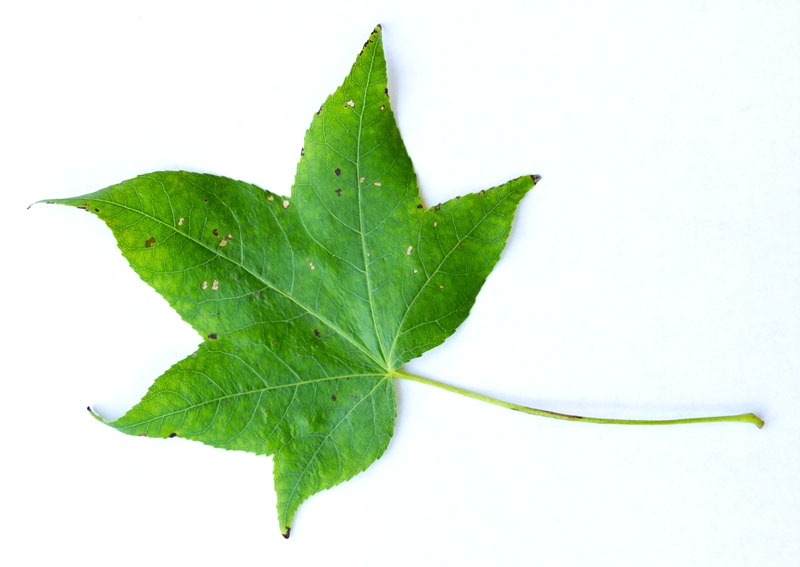
Sweetgum has star-shaped leaves which are arranged in a single alternate manner on the branches. It has 3 to 7 lobes. Leaves have a green color and shiny appearance. Leaves change color in fall turning into a wide range from yellow to purple.
These are usually 8 to 13 cm wide. Often these are compared with maple. However, these are distinguished by their position on branches and their shiny leathery appearance.
Bark
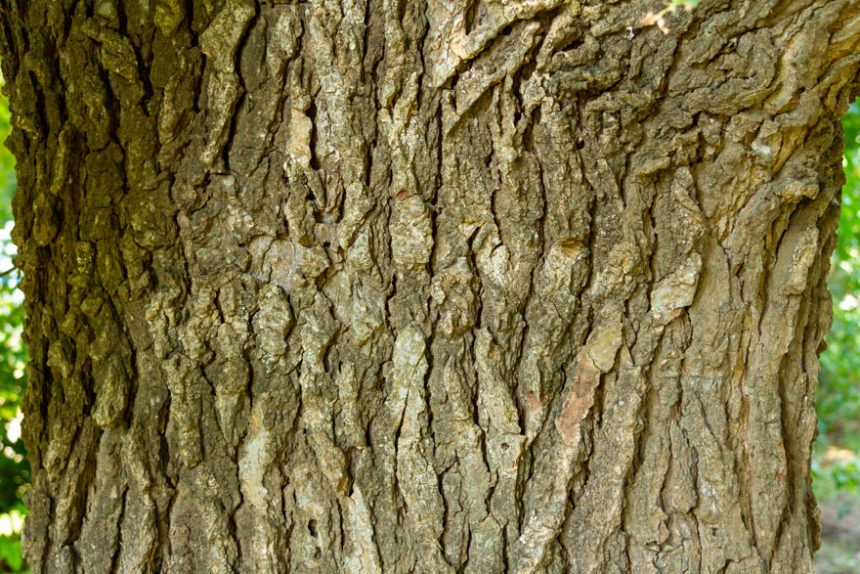
Bark has light grey color. It has deeply furrowed scaly ridges. In the mature trees, bark may turn greyish brown.
Fruit/Gumball
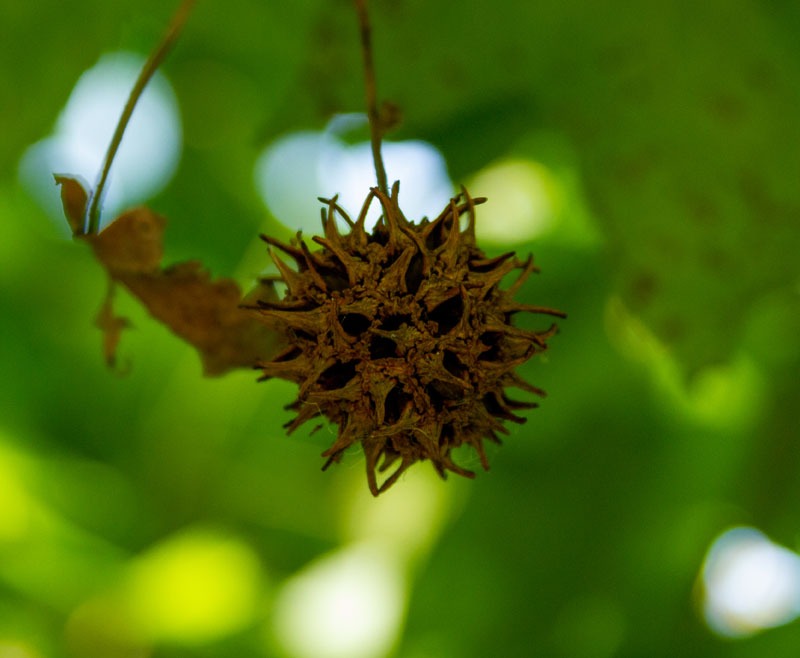
Fruit from sweetgum trees is known as “gumball”. They are produced in clusters and carry spikes over their surface. They are initially green and later turn into a hard brown woody structure. These have a size between 1 to 3 inches. It houses numerous seeds.
Seeds can create a problem and are very messy to deal with. These fall between December and April. Some species do not produce gumballs.
By the way, these are painful to step on while barefoot!
Types of Sweetgum
American sweetgum Liquidambar styraciflua is most commonly found in the United States. It produces a big shady tree that grows 60 to 80 ft tall and around 60 ft wide.
This is a deciduous tree that grows under full sun in USDA growing zone 5 to 9. It is a decorative tree and grows well in most soil types. It has star-shaped leaves. Leaf has 5 lobes with serrated edges. Its leaves are between 3 to 6 inches long and wide. Leaves change color during fall into purple, orange, red and yellow. It produces gumballs that are brown and surrounded by spikes-like structures.
It produces shallow roots which may create a problem for your building. So, it is better to plant it at least 10 feet away from the building. Gumballs also need to be cleaned in residential areas or they may cause a slip if anybody steps over it.
Conclusion
Sweetgum produces a decent amount of heat compared to other firewood. Having said that, it’s incredibly difficult to split. Your time would be better spent splitting other types of wood.
As you all know, the best firewood is free. Should you be given an opportunity to harvest some Sweetgum, I encourage you to give it a shot! Don’t bite off more than you can chew, of course. I think you’ll find that splitting it isn’t worth the struggle in most cases.

